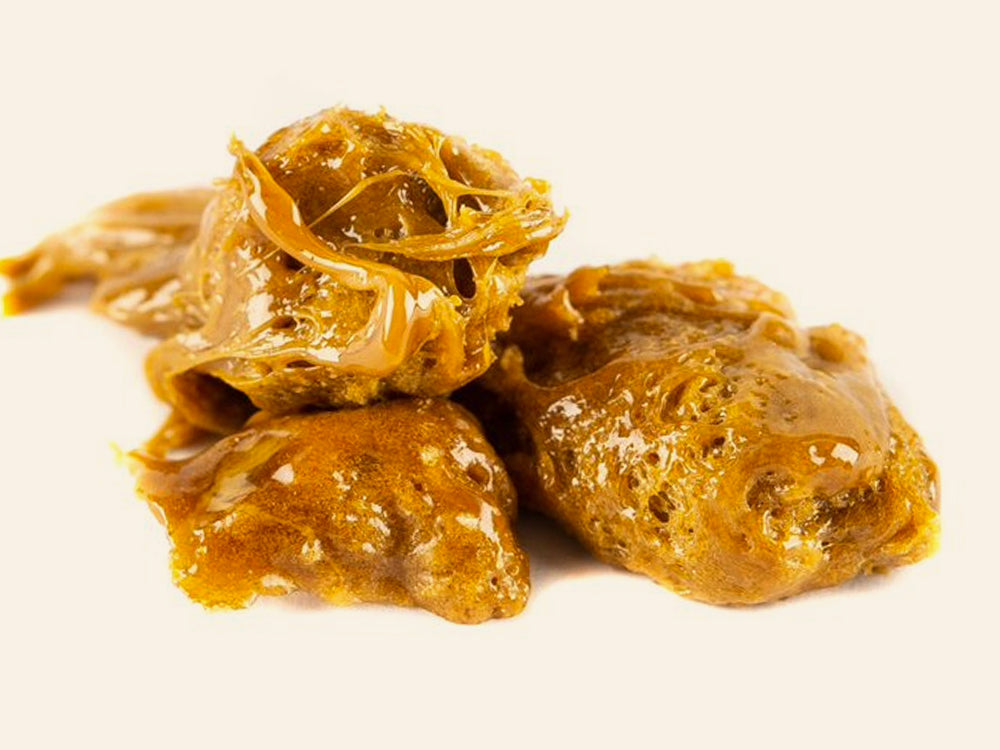Cannabis Basics
Intro to Concentrates
Cannabis concentrates — solid or liquid products that are produced by processing cannabis flower into a concentrated form, to be either ingested or inhaled — are legally available for sale in Ontario. We look at how they work, the pros and cons of consumption, and what to consider when shopping for these products.
It’s legal to produce, sell and purchase cannabis concentrates in Ontario. Here’s a rundown of what they are, how they work in the body, the ways they differ from other forms of cannabis, the pros and cons for using them and what to consider when shopping.
What are concentrates?
Concentrates is actually an umbrella term for the variety of products that can be produced when cannabis flower is processed into a concentrated form. These products can come in liquid or solid form, such as hash, rosin, shatter, wax, kief and are either ingested or inhaled.
The process for creating concentrates varies depending on the intended finished product, but the basic goal is to isolate and remove the cannabinoids and terpenes. During the concentration process, dried or fresh cannabis plants can be sifted; exposed to heat or extreme cold, gas (such as carbon dioxide), a solvent, another oil or a combination of these; or further refined using ethanol.
How do concentrates work?
The way the cannabinoids enter your body depends on the form of concentrate and method of consumption. When cannabis concentrate is ingested, it can produce effects that are similar to those experienced when cannabis flower is smoked or vaped; however the effects may be delayed due to digestion, which can take from 30 minutes up to four hours or more. When cannabis concentrates are inhaled (such as by dabbing or vaping), the tetrahydrocannabinol, or THC, is absorbed by the blood in the lungs and moves quickly to the brain, producing an almost immediate effect, possibly within minutes.
The duration of potential effects also depend on how the cannabis concentrate is consumed. If it’s inhaled, effects can last one to three hours, or longer. When concentrate is ingested, effects can be felt for up to 12 hours. The timing of the onset and duration of effects vary from person to person. Individual factors such as sex, mental and physical health, age, personality, genetics and even the amount of food ingested prior to consumption all play a part.
How are concentrates different from other types of cannabis?
The main difference between concentrates and other forms of cannabis is in their potential to contain much higher concentrations of cannabinoids than the raw plant. For example, concentrates can have up to 90% THC, while dried flower typically contains 1% to 30% THC. Concentrates available through OCS that are meant to be inhaled can contain no more than 1,000 mg of THC per package; ingestible extracts contain no more than 10 mg of THC per unit.
Learn more about the differences between extracts and concentrates.
What are the pros and cons of consuming concentrates?
Depending on their form, concentrates can be a smoke-free alternative to inhaling cannabis, which may come with risks to lung health. The higher concentration of THC may increase the risk of overconsumption.
What to consider when shopping for concentrates
Before you purchase a cannabis cocentrate, read the label or the information available on the product page at OCS.ca so you know how much THC and CBD it contains. If you are trying concentrates for the first time, choose a product with a low level of THC or a high amount of CBD, which can counter the unpleasant effects of THC.








